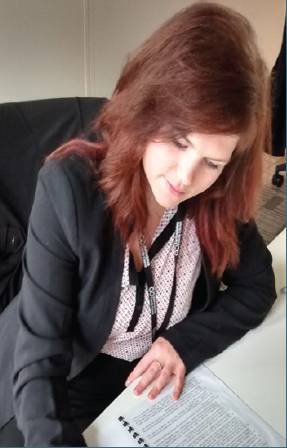Apprenticeships
The advance of apprenticeships
Polly Botsford assesses the apprenticeship landscape in the legal sector and catches up with Jonathan, Roxanne and Jessica, whom CILEx Journal interviewed, in 2015, when they were apprentices.

About the author
Polly Botsford is a freelance legal journalist.
It was just over a year ago that the government turned its attention to apprenticeships, laying plans for new structures and incentives to encourage more school leavers to choose the earn-as-you-learn path. 2016 saw the creation of the Institute for Apprenticeships and the arrival of revamped, employer-led apprenticeship standards.1 There are more changes on the horizon for 2017, including the controversial apprenticeship levy.
The number of apprenticeships within the legal sector does continue to grow, slowly but surely. CILEx has 532 apprentices currently registered compared with 360 at the same time last year: an increase of over 45%. Bearing in mind CILEx only started offering legal apprenticeships in 2013, these numbers are encouraging. There are around 200 apprentices on the programme offered by CILEx Law School (CLS), and 76 have actually completed the course. Vicky Purtill, director of education at CILEx, says: ‘People are becoming more aware of apprenticeships whether through the media or from law firms. Slowly, the message is getting across.’
As well as an increase in the number of applicants, on the supply side more firms are offering places. Jenny Pelling, director of business and apprenticeships at CLS, says: ‘More firms are offering apprenticeships, and they’re a very wide range of size of firm.’ CLS is also looking at non-legal apprenticeships, especially in IT and finance. In this regard, CLS is working in an alliance with training provider, Kaplan, and Arch Apprentices, a tech apprenticeship provider, to ‘advise organisations jointly on what apprenticeships could fit the wider business’ says Jenny Pelling.
As we have seen, firms are coming to terms with the implications of apprenticeships as an alternative pathway. But it is the apprenticeship levy, a quasi-tax on employers, which is really focusing minds. The levy, being introduced in April 2017, is a charge to UK employers, with a wage bill of over £3m per year. They have to pay 0.5% of that bill, so £15,000, to HM Revenue and Customs. The money goes into a digital account, and employers can then spend that money on apprenticeship training. The effect is to force employers to spend at least £15,000 per annum on apprentices.
In the light of the new levy, Jenny Pelling says that firms ‘are changing their strategy’ . Some may want to rethink the number of trainee solicitors in favour of legal apprentices, others will use the levy as an opportunity to offer apprenticeships to existing staff. Jenny Pelling adds: ‘We have clients with law graduate paralegals who will be using part of their levy by sponsoring those paralegals on the Chartered Legal Executive apprenticeship.’
One particular aspect of the next generation of legal apprenticeships is the introduction of the Level 7 solicitor apprenticeship, which will enable a school leaver to put themselves on a direct path from apprentice to solicitor. A small number of these are currently available, for example, recently merged firm Charles Russell Speechlys announced, in December 2016, that it would be offering two solicitor apprenticeships, starting in September 2017, partnering with CLS and City, University of London. Louise Ward, a partner at Charles Russell Speechlys, sums it up when she says: ‘It is a great opportunity for individuals to experience an alternative route into the legal profession and for us to find talented future lawyers.’

At the same time as the levy, there are a number of new features on the apprenticeship landscape. In May 2016, the government opened the doors of the Institute for Apprenticeships, which was tasked with advising the Secretary of State for Education on the administration of apprenticeship funding, maintaining the quality of existing standards and designing new standards, if needed. The institute’s beginnings have not been auspicious, however, as the first CEO stepped down after only two months in post. A new shadow chief executive, Peter Lauener, is now in place though the institute is not yet fully operational.
New apprenticeship standards (known as Trailblazers) were introduced last September. These are sector-led and sectorspeci fic knowledge standards and competencies which are needed for each type of apprenticeship. For the legal sector they are the ‘Apprenticeship in Law’ .2 (Given that Trailblazers are only a few months old, the number of apprentices on these standards is still low: around 40 apprentices (20%) at CLS are on the new standards.)
Historically, there have been concerns raised by employers, and would-be apprentices alike, citing the lack of sufficiently high standards in apprenticeships as a reason for not offering - or applying - for them; it is anticipated that the Trailblazer standards will change this. In addition, the government hopes to challenge perceptions of low quality with a new register of training providers, which is designed to ‘give employers an assurance that the providers they are using have the capacity and capability to deliver good quality apprenticeship training’ .3 Plus, only an apprenticeship course which meets the definition will be able to call itself an apprenticeship (and, thus, meet the minimum standards). The Enterprise Act 2016 gives the government the power to take action if the term is misused by training providers.
An important part of the growth of apprenticeships is the apprentices themselves speaking up and out about them. Jonathan McDonnell (see page 16 of this issue), who recently completed his legal apprenticeship with housing group, New Charter, has with some other current and former apprentices launched a new network, the Legal Apprenticeship Network (TLAN). TLAN is for legal apprentices to share experiences, and to gain knowledge and understanding about what a legal apprenticeship involves; in other words, let the facts speak for themselves.
In 2015, CILEx Journal interviewed four legal apprentices to find out what it was really like to be one (( 2015) July CILExJ pp20 and 22). We have caught up with three of the apprentices, Jonathan, Roxanne and Jessica, to find out how they got on and what they are doing now.

Jonathan McDonnell
It seems that nothing will stop Jonathan McDonnell. After completing his legal apprenticeship (Level 3), he has not had enough of studying and has now embarked on a four-year , part-time LLB (ironically, given the political maelstrom currently, studying EU law). In addition, after a rigorous interview and admissions process, he has become an Army Reserve soldier, ‘a childhood dream’ , he says. Jonathan completed his apprenticeship, in-house , at New Charter Housing Trust Group in September 2015, though in fact he had already been offered a permanent post by then in the group’s litigation team. He studied at Manchester Law School in conjunction with CLS (and this is where he is also doing the LLB course).
Clearly, Jonathan’s experience has been overwhelmingly positive. He says: ‘Being an apprentice is a perfect insight into what a legal career will be.’ Now that he is studying alongside undergraduates on the LLB course, he can make some interesting comparisons: ‘Full-time students don’t really understand what a legal career means and have a misguided view from films and TV. They think that they will start, on day one, with an amazing salary doing amazing work. It is a possibility, but it is not a guarantee. An apprenticeship is an honest insight, most of all.’
Jonathan compares studying under the apprenticeship process with the structure of study for the LLB: ‘There is more work than under the apprenticeship: you have to prepare for weekly workshops. These are good and you get to grips with a subject really well with the workshop format, but they also mean that there is less flexibility. With an apprenticeship, you have Roxy Warrilow more control over your studies.’
It is apparent that Jonathan is the kind of person who thrives under the hard work and pressure which an apprentice’s life can bring: ‘I enjoy the challenge: being constantly under pressure and strict deadlines. I think it brings out the best in you.’

Roxy Warrilow
Roxy Warrilow says that though she ‘didn’t fall in love with the law’ , she is still really pleased that she completed her legal apprenticeship with Staffordshire County Council because ‘it has been useful and I have some good qualifications. The skills I have gained have helped me already in my new role.’
Roxy started her two-year apprenticeship, in September 2014, in the property team at the council. She had hoped to secure a permanent post in legal, but unfortunately no jobs were available at the time that Roxy was applying. She is currently working in Children’s Services.
Roxy says that the studies were fine: ‘I really didn’t mind the learning. I am quite academic and I organised my work quite well.’ She feels quite strongly that apprenticeships are an important consideration for young people: ‘Schools do tend to push university, but a lot of people don’t want to go or aren’t right for it and don’t know what to do. People told me I wasn’t reaching my potential, but I didn’t have a career in mind and I didn’t want to spend time and money on a degree when I wasn’t sure.’

Jess Brown
The CILEx path is the one chosen by Jess Brown after she completed her Legal Apprenticeship with top 50 firm, Addleshaw Goddard. Jess is now studying her Level 3 paralegal course with CLS, and hopes to start her Level 6 qualification to become a Chartered Legal Executive in due course. She is studying part-time with CLS, while working full-time at Addleshaw Goddard.
Jess, whose ultimate aim is to be a solicitor, was one of eight apprentices at the firm who all finished at the same time: ‘I really enjoyed the apprenticeship, and the apprentices were very supportive of each other. We were even all on the same floor.’
The CILEx distance-learning course is different from the apprenticeship because, says Jess, you do not get the same study time from your employer, though the firm still gives her five days’ leave per year. But you do have the bonus that there are ‘other lawyers around to help you’ .
Jess is also taking advantage of extra online lessons delivered by CILEx, which she says are really helpful. She is coming up to exam time and so is being ‘quite strict’ with herself, though Jess says that when there are not exams she is more relaxed about her studies.
- Further details of how the Institute for Apprenticeships will operate are set out in draft strategic guidance for 2017–18 on which the government is consulting currently. The consultation document is available at: http://tinyurl.com/htgsuxf. The closing date for responses is 31 January 2017
- Polly Botsford, ‘Apprentices: the next generation’, (2016) February CILExJ pp12,14 and 16
- Supporting quality and employer choice through a new Register of Apprenticeship Training Providers, pp1 and 2, available at: http://tinyurl.com/zp2hgqj